Eric C. Sheninger's Blog, page 24
September 27, 2020
High-Agency in the Remote and Hybrid Classroom
Educators desperately want and need support. They need practical strategies that are not just effective but also can be developed in a reasonable amount of time. To achieve this goal, we must first examine the foundational elements that lead to successful teaching and learning, whether the environment is remote or hybrid. In no particular order, these include:
Maslow before Bloom's (SEL considerations)Instructional design grounded in sound pedagogyPurposeful use of technologyLeveraging a learning management system for continuity and cohesivenessEquityContinuous feedbackJob-embedded and on-going professional learningAt first glance, one might think that there is a great deal to consider. Under the current circumstances, I would agree. That is why it is not the time to re-create the wheel and work harder. One pitfall is trying to teach traditionally under the current circumstances. Without a doubt, this will be and has been, more time consuming for educators. So, where do you begin? There are many strategies that educators were implementing well before the pandemic that hold more value now. Regardless of the terminology used, these represent more personalized pathways that focus on student agency leading to empowerment and more ownership of the learning experience.
I feel the best way to support educators is to show how it can be done under the same conditions by sharing practical examples. For the past two years, I have been blessed to work with the Corinth School District in Mississippi on pedagogy, both digital and non-digital. We have seen incredible growth in all schools across the district through the coaching of both teachers and administrators. With the foundation established last year, they were able to adapt to the current landscape quickly.
Over the summer, they really ramped up how their LMS (Canvas in their case) would be used K-12 to facilitate their hybrid learning model better. Through the lens of high-agency strategies, I will share some practical strategies that educators can implement right now as well as some examples.
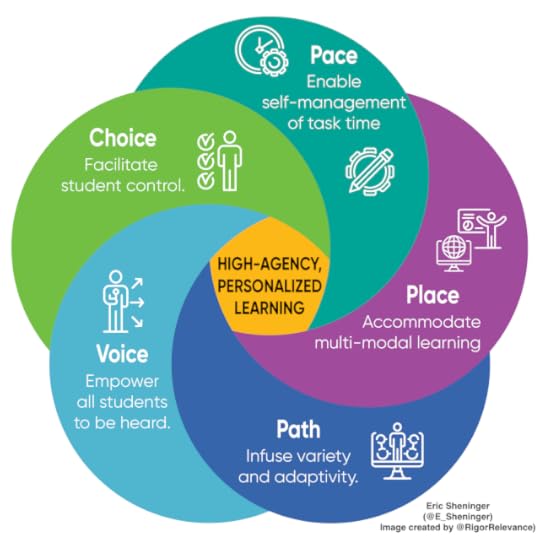
Voice
Honoring kids' voices and allowing them to have a say during the learning process is a central tenet of student agency. In many cases, voice can be amplified through the cover of anonymity, which is critical for introverts and shy students. Virtual breakout rooms and digital tools allow all students to respond during reviews of prior learning, checks for understanding, closure activities, and after collaborative activities. I have seen all schools incorporate Zoom breakout rooms in Corinth but was super impressed with the pre-K teachers who used it in conjunction with Nearpod. The elementary teachers are also using both Seesaw and Canvas to promote voice.

Choice
Choice might be one of the most uncomplicated components to integrate daily, whether you are remote or hybrid. Strategies such as choice boards and playlists developed using Google tools afford students with greater control over their learning while also freeing up the teacher for targeted instruction or support. I have really been impressed with the choice boards at the high school and how Canvas is being used to set them up. The elementary school has also upped their game as of late.
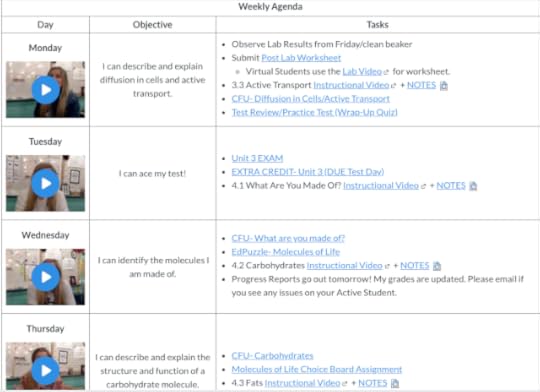
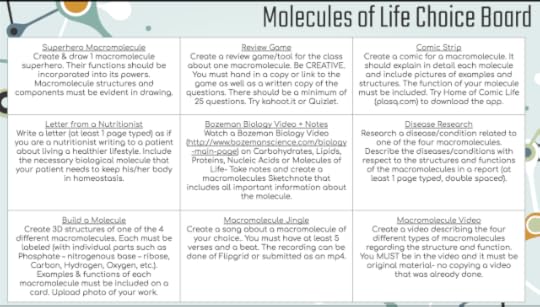
Path
They are many ways to allow students to determine their own path during remote or hybrid learning. Path could come in the form of customized curriculum, asynchronous virtual courses, selecting the order in a playlist, or independent study. It allows students to progress towards standards based on their mastery levels, interests, and goals. Utilizing adaptive learning tools as part of a station rotation model or playlist provides tasks that align with individual strengths and weaknesses. I love how middle school teachers responsible for remote learners have created a virtual station rotation model in Canvas.
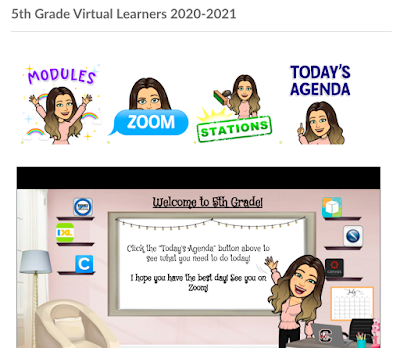
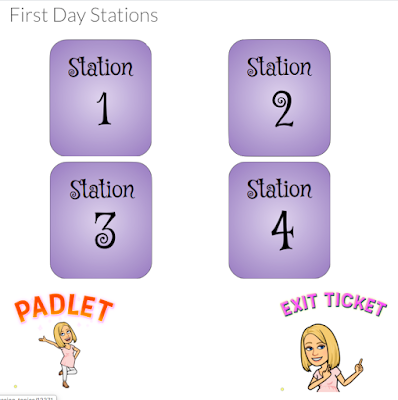
Pace
Pace is as simple as allowing kids to work through activities where they have to self-manage their time in order to achieve mastery. Some kids need more time while others less. Rigorous and relevant asynchronous tasks provide extended periods of time to complete tasks to reduce stress, dive deep into concepts, and prioritize learning. Self-paced activities allow all students to progress through concepts while freeing up the teacher to work with those who need the most help. The math department at Corinth High school has been using the flipped approach with Bitmoji classrooms as well as self-paced programs with a great deal of success. Students in the elementary school get to work at their own pace in various centers.
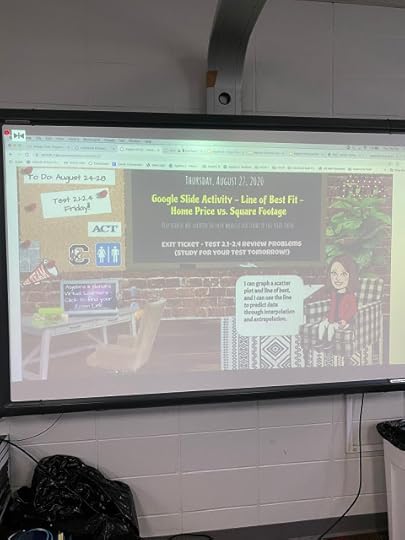
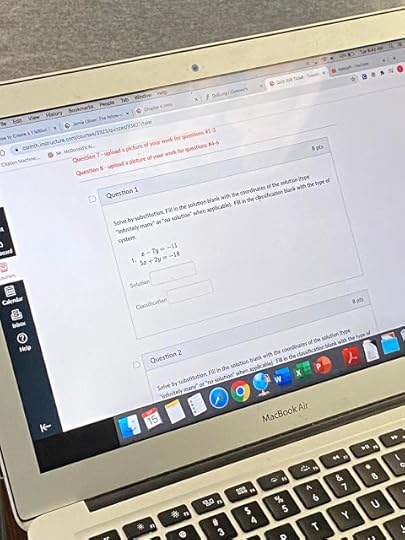
Place
Like many school districts, learners in Corinth can choose to work remotely at home or come to school for in-person learning, reducing anxiety and stress while emphasizing health and safety. For the students participating in in-class learning, social distancing measures need to be implemented. As a result, Zoom breakout rooms have been utilized extensively regardless of where kids are learning to foster discourse and collaboration. I must say how impressed I have been to see how the elementary teachers are making this work across the entire school.
I am only scratching the surface regarding how Corinth School District educators have successfully utilized an array of high-agency approaches to personalize already this year. They have addressed the seven elements presented at the beginning of the post. Over the summer, they planned and trained staff on how to use Canvas better. After some feedback from my initial coaching visits in August, the use of breakout rooms became the norm as a means to get kids talking. Building principals and teachers working together to process and reflect on each coaching visit combined with an intrinsic motivation to improve epitomize outcome-based professional learning goals. All in all, I couldn't be more proud of this district and what they have and will continue to accomplish.
For more remote and hybrid learning strategies and resources click HERE.
If you are interested in having a conversation about ICLE's professional learning solutions, including job-embedded and on-going coaching, let me know (email above on the top right) or go HERE.
September 20, 2020
Developing SEL Competencies Through Technology
The COVID-19 unleashed an array of challenges that resulted in schools being closed for in-person instruction for many months. As I write this post, many have begun the year with remote learning, while others have opted for a hybrid model where a certain amount of kids are still learning at home. There are growing concerns about students' mental well-being as well as inter- and intra-personal skills, which have only been magnified by not only the pandemic but also advances in technology as a result of the Fourth Industrial Revolution. Over the past few months, many kids turned to digital tools such as social media or games to pass the time. So much so that one has to wonder about the overall effect on a social and emotional level. The fact is that we don't know the extent of the impact on kids and might not get a firm grasp on this for years.
In a recent article Venola Mason and Tawana Grover emphasized the priority to address the SEL needs of students during and after Covid-19:
Schools must be prepared for the aftermath of the pandemic. We have to elevate our attention to emotional Intelligence and can no longer view this work as optional. Covid-19 has forced us to see that being primarily focused on developing students' IQ is not enough, and in order to help students to reach their full potential, we must also help them to develop their EQ or emotional Intelligence. When we address social-emotional learning (SEL) we advance emotional Intelligence. Consider the model below as a guide to helping students navigate challenges through prescribed modalities in mind shifts.
It is essential first to understand where issues can arise. At the forefront are social isolation and a feeling of loneliness. Then there are other mitigating factors stemming from digital drama, selfies, digital footprints, privacy violations, cyberbullying, distraction, time management, and violent video games. The inherent challenge and opportunity are to build and foster SEL competencies, including self-control, communication, humility, integrity, compassion, perseverance, courage, empathy, curiosity, teamwork, and gratitude.
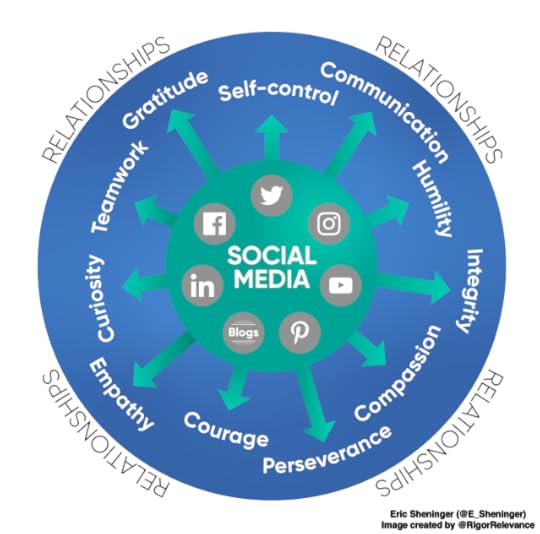
Some schools have been proactive in this area, as pointed out in an article by Jessica Berlinski:
Schools across the country use a digital program that provides kids a safe place to explore their challenges, learn and practice skills to navigate them, and build the confidence to ask for help. The 420 lessons in the program, called Ripple Effects, cover core SEL skills as well as personal topics ranging from anxiety, bullying and marijuana to managing fears around an undocumented parent.
Knowing what the issues are and how recent events have amplified them, the time is now to be proactive. Here are what districts, schools, and educators can do:
Focus on the purposeful use of technology to support and enhance learning across the curriculum in both remote and face-to-face settingsTrain parents and students on SEL competencies, digital citizenship, responsibility, and cyberbullyingCreate anonymous tip lines for students and parents to report issues and concernsModel appropriate use aligned to SEL competencies, especially with the tools kids currently use (TikTok, Snapchat, YouTube)Communicate excessively with stakeholders using blogs, Twitter, Facebook, YouTube, and other pertinent tools highlighting SEL competenciesProvide professional learning support to teachers and administratorsAs social media becomes even more prevalent in students' lives now and in the future, it is critical that educators and schools provide the necessary support while embracing digital leadership. Delegate when necessary, but also consider reaching out to teachers and students for ideas. You got this!
Be sure to check out my entire #remotelearning series.
September 13, 2020
Empathetic Remote and Hybrid Learning
As almost all schools across the globe are back in session in some form or another, many have decided to begin the year remotely with the hopes that COVID-19 cases will subside in the coming months. Others have started the year with some sort of hybrid model. There is no easy decision when it comes to determining which pathway is the most appropriate at this time. Each, in its own right, presents particular challenges. Regardless of the route taken, all learners and adults' health and safety should be the driving force that determines whether to stay the course or move in another direction.
There is a great deal of stress on students, parents, and administrators, and even more on teachers. The next few weeks, or even months, will be ridden with anxiety, fear, and at times confusion no matter how prepared a district or school is. What we have learned about COVID-19 is that it can spiral out of control at a moment's notice if social distancing and health recommendations aren't followed. However, this is not all doom and gloom. Throughout the pandemic, educators have embraced new opportunities that have materialized and taken advantage of a clean slate. Innovative practices and technology that might have been on the back-burner months ago are now front and center. Rest assured, when this is all over the resilience of teachers and administrators will help usher in a new normal that better meets the needs of all learners.
Now more than ever, empathy is needed to help everyone get through remote or hybrid learning. The reality is that successes are and have been, overshadowed by fear, stress, and anxiety at levels never experienced. Below I will address six specific areas that can help to create an empathetic teaching and learning culture.
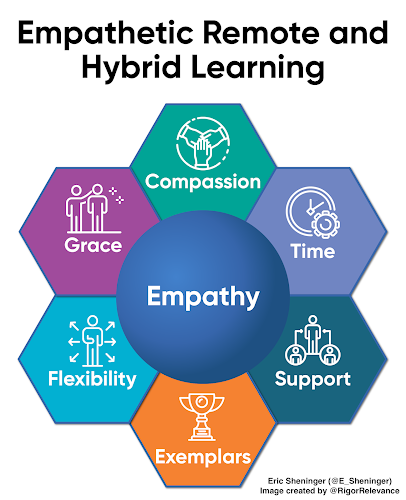
Time
As I work with more and more teachers across the country, this is the number one issue that consistently comes up. Teaching both face-to-face and remote learners at the time is not easy, but I recently developed a pedagogical framework using a station rotation model that can help. Many hybrid learning models have either an entire day (typically Wednesday or Friday) for teachers to plan, grade, provide interventions, and conference with students. Some set aside a half-day. Administrators can even cut any non-instructional duties to free up teachers. Remote teachers also need time, which is why having them follow a traditional school day schedule doesn't make much sense, especially when asynchronous tasks can be employed, freeing up much needed minutes or even hours.
Support
Teachers and administrators need professional learning that aligns with the challenges they currently face and the demands of education in a COVID-19 world. Targeted presentations can now be facilitated virtually, both live and on-demand, in time-sensitive ways. Job-embedded coaching, which most educators yearn for, can also be facilitated virtually or face-to-face. Asynchronous models that address the time issue above can also be used to mirror the same conditions that learners will experience either remotely or in a hybrid model. Support can also come in the form of budget allocations for needed technology, an administrator covering a teacher's class, feedback, granting mental health days, listening to and then acting on general concerns, allocating time each day to check in with remote learners, and providing daily encouragement through inspirational messages. Another suggestion is moving around personnel so that there are dedicated teachers just for the remote learners in a hybrid model. Even though balancing both face-to-face and remote kids can be done successfully, it is still a challenge.
Grace
Depending on your position, leading and teaching with grace is the epitome of an empathetic culture. This can mean many different things to people, but overall it can be characterized by being welcoming, patient, warm, and kind. It's about emphasizing relationships over discipline or correction. For a learner, it might be giving him or her multiple chances on an assessment or to complete a project. Or it might be a focus on restorative practices that emphasize forgiveness and the building of relationships. Leading with grace is all about service to others with a focus on humility and respect. From an administrator perspective, it means treating teachers with dignity and exhibiting generosity in addition to the characteristics listed earlier in this paragraph. When it is all said and done, continuously ask these questions when someone might be having a difficult day:
Are you ok?Is there anything I can do for you or that you need?Is your current workload manageable?ExemplarsEmpathy is about putting yourself in the shoes of others. Modeling through exemplars is a great way to help ease potential concerns, fear, and anxiety on behalf of learners, teachers, and administrators. Showing examples of sound remote and hybrid pedagogy, as well as successful implementation plans, builds confidence in that you don't have to reinvent the wheel. Recently I shared what some Corinth School District educators in Mississippi were doing and received some very positive feedback. In particular, teachers want to see what this looks like in alignment with their grade level and content focus.
Flexibility
For remote or hybrid to work, a flexible approach has to be prioritized. Having teachers and students follow a rigid schedule that replicates what traditional schooling has looked like for years could dramatically impact morale, attentiveness, and motivation. Video conference fatigue is a real issue, and it just doesn't make sense to have remote learners log in from home when they could just watch the recorded highlights and then complete the same tasks that they could in class asynchronously. Teachers also get fatigued if they are on a screen too long. If the decision has been made for all students to be remote, then at the very least, each teacher should be given a choice as to whether or not they want to teach from their classroom or home. Other areas that can show flexibility include deadlines, attendance, and general with teachers and students.
Compassion
Some might think grace and compassion are the same things. Even though they are similar, there is a difference. Compassionate teaching and leadership consider any type of suffering and move towards specific actions to relieve it. The pandemic has resulted in so many misfortunes that are difficult to wrap our heads around. This is why social-emotional learning (SEL) should be integrated into any learning model, but it also has to be adapted for adults as well. Henri Nouwen said it best, "Compassion asks us to go where it hurts, to enter into the places of pain, to share in brokenness, fear, confusion, and anguish. Compassion challenges us to cry out with those in misery, to mourn with those who are lonely, to weep with those in tears. Compassion requires us to be weak with the weak, vulnerable with the vulnerable, and powerless with the powerless. Compassion means full immersion in the condition of being human."
There is hope as educators continue to embark into the great unknown. The virus will eventually be subdued. New learning models and innovative pedagogies will take hold. Parents and students will be more comfortable with and open to different ways to learn. Resilient educators who triumphed in the face of adversity will lead education in a better direction. Empathy will not only help us get through to better days but will also help to establish a thriving school culture grounded in relationships.
September 6, 2020
A Pedagogical Framework for Managing Face-to-Face and Remote Learners at the Same Time
It's has been great to be back in schools working shoulder to shoulder with teachers and administrators as I kicked off year two with the Corinth School District in Mississippi. Until this point, most of my interactions with educators have been through virtual presentations, workshops, and coaching. Now don't get me wrong as this has been incredibly fulfilling and a great learning experience for me. However, you just can't replace face-to-face professional learning, in my opinion. Body language, eye contact, verbal discourse, collaboration, and relationship building are much more powerful when people are physically together.
Even though I have been on-site for workshops since the start of the pandemic, last week was my first time working with educators in small groups and visiting classrooms with students. Before I dive into this post topic, I must say how impressed I was with what the teachers and administrators have accomplished. Their growth has been astounding as they have successfully implemented many of the pedagogical strategies emphasized last year, which has made the transition to a hybrid learning model more manageable. As I visited each school, I felt like a proud parent and can't say enough about their collective efforts to improve professional practice.
There are still challenges, though. Like many districts, Corinth has given parents the option to send their kids to school or learn remotely. In some cases, it hasn't been easy to effectively manage both face-to-face and remote learners during the same class period, which is the case for almost every school district. It is important to remember that no one was trained for this, and pedagogically-sound models are just starting to appear. Teachers not only in Corinth but across the world, are exhausted. I learned from working with educators virtually and on-site the toll that hybrid learning is enacting on educators. During a very candid conversation with a small group, I experienced firsthand that the single most impediment was time. The number of hours that some educators are working is just not sustainable.
The key is to either free up time or think about how it is being used. This was overcome by having a dedicated teacher assigned to all the remote learners at the kindergarten through the sixth-grade level. Unfortunately, having a dedicated remote teacher for the upper-grade levels isn't an option in smaller school districts. After listening to some teacher concerns at the middle school, I began to map out a framework that could help teachers manage their time better while in school. As I scribbled on a large whiteboard, I simultaneously bounced ideas off the principal Nathan Hall. The end result was a simple rotational model preceded with direct instruction followed by a summary activity or closure. Since Corinth Middle School has fifty-minute periods, I suggested ten minutes for each rotation as well as the mini-lesson and closure activity.
Content still matters, but there has to be some prioritization of standards and, from there, a mini-lesson. My advice is to keep it short and sweet. Depending on the block of time, this can be either ten or fifteen minutes. Teachers can record this as it is being streamed live using a video conference tool and then uploaded to a learning management system for all kids to refer to whenever they want. Another option is to use the flipped approach and record the mini-lesson for all kids to watch at home before class. Within this first small chunk of time, it is critical that relevance is imparted, and the best way to do this is through a quick anticipatory set. The last segment of the class could consist of a formative assessment or a closure activity.
Now let me discuss conceptually what the rotational model could look like in a school. The teacher has two options here. Either group all the remote students together or use data to regularly group and regroup kids as they work to approach, meet, or exceed standards.
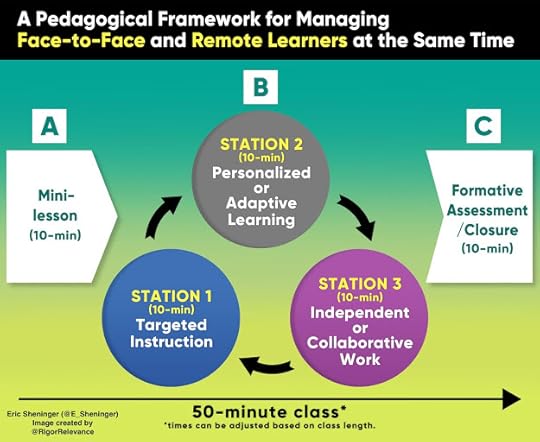
Station 1 (Targeted instruction): After a general overview of the lesson during the opening minutes of class the teacher can then dive deeper through more extensive modeling and checks for understanding. During this time, students can also have their questions answered.Station 2 (Personalized or adaptive learning): In this station, students can work through the curriculum and concepts based on strengths, weaknesses, or personal interests. There are both free (CK-12, Khan Academy, Prodigy, Freckle) and paid (HMH intervention tools, Waggle, IXL) programs. Here is where data can be collected and analyzed for groupings if the right tool is used.Station 3 (Independent or collaborative work): Initially, I would go with independent work as it takes less time to plan for than cooperative learning. Activities could consist of scaffolded practice problem sets, independent reading, or the use of a self-paced personalized tool if you decide to make the other station purely adaptive.
The entire premise of the model presented above is to make the best use of available time during a class period where a teacher is managing both face-to-face and remote learners. I suggest only three rotations to begin, but you can definitely add more if you are working with a more extended block of time. Or you can even tweak it to meet your specific needs as this is what Nathan Hall did for his staff. Below you will see what two Corinth Middle School teachers developed and integrated with Canvas.
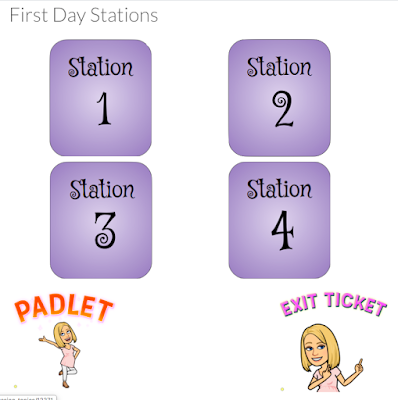
Once you are comfortable, consider utilizing choice boards, playlists, or flipped lessons if these won't turn into a time sap. Or you can plan for some sort of cooperative learning using virtual breakout rooms. To ensure success, it is also a good idea to commit to a learning management system such as Google Classroom, Canvas, or Schoology. It becomes more difficult managing remote learners if you are not using one of these solutions. I loved visiting with Corinth High School science teacher Sally Beth McCullough recently and seeing firsthand what she has implemented successfully. Below you will see how she is effectively using Canvas and choice boards.
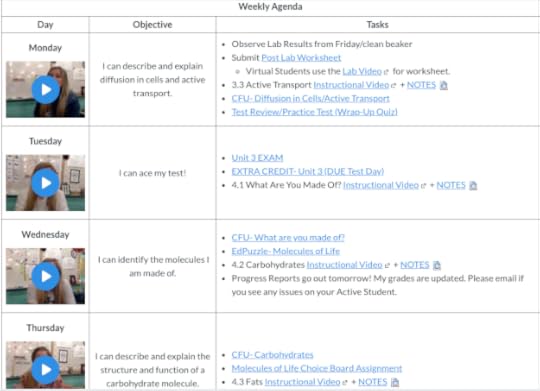
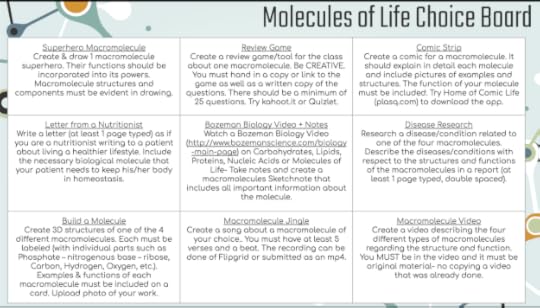
I still have 18 more days with the Corinth School District this year and can't wait to see what their teachers and administrators accomplish.
Managing face-to-face and remote learners at the same time can be a challenging task for teachers and schools as a whole. My hope is that the framework and examples above can serve as a baseline to think about how to best use the time available without succumbing to burnout. As teachers, always lean on your colleagues near and far. They are your best resource. If you are an administrator, be flexible with your staff and demonstrate empathy. They need your support more than ever. Finally, always be on the lookout for professional learning opportunities that can fill in the gaps and provide needed feedback for continuous improvement. You all will get through this as educators always rise to the challenge.
Be sure to check out my entire #remotelearning series.
August 30, 2020
Avoiding Synchronous Video Fatigue During Remote Learning
The COVID-19 pandemic has resulted in some monumental shifts to practice. Educators have taken a critical lens as to why they teach the way they do and how it can be done more effectively. For virtually every school that is, or will be, implementing some sort of remote or hybrid learning model, you can bet that videoconference tools will play an enormous role. While it is excellent that educators now have a variety of options at their disposal, there is a growing concern that has to be addressed if learning is the goal.
I need to get something off my chest. Have you heard of Zoom fatigue? It is a real thing I assure you, and it applies to Microsoft Teams, Google Meet, or any other similar platform. Facilitating professional learning using video conferencing tools is exhausting. I have experienced this firsthand over the past couple of weeks as I have worked with numerous districts on remote and hybrid pedagogy through all-day virtual workshops. Being put in this position empowered me to critically examine how the day would playout for the educators I was working with. In the end, I went with shorter sessions, longer and more numerous breaks, loads of collaborative activities, and asynchronous tasks where I remained on-hand for individual coaching and feedback.
I bet many of you have experienced the same thing in meetings and professional development since the pandemic began. Now we need to see ourselves in our learners' shoes to provide experiences that both engage and empower them. It becomes harder to do this if we miss the mark with the synchronous component. Heather Marcoux recently shared this:
Experts say it's understandable that kids are just "over Zoom" as the Huffington Post put it. Just like adults, kids are feeling what experts are calling Zoom fatigue. It's a real phenomenon that experts like Gianpiero Petriglieri, an associate professor at Insead who studies sustainable learning told the BBC. "The video call is our reminder of the people we have lost temporarily," he explains. "What I'm finding is, we're all exhausted; It doesn't matter whether they are introverts or extroverts. We are experiencing the same disruption of the familiar context during the pandemic."
Below are some strategies to consider in order to get maximum impact from any live video tool.

Interactivity during synchronous sessions in the form of discourse and collaboration are vital as is being laser-focused in terms of the content that has to be delivered. Less is more in this case, and brevity combined with sound instructional design can work to create impactful lessons.Co-create norms with students for behavior, attentiveness, and interaction.Don't teach every standard. Prioritize those that are the most important by grade level and content area.Begin with a short anticipatory set to infuse relevancy and get students fired up about the lesson.Infuse routine breaks that incorporate movement and social-emotional (SEL) activities.Achieve a balance through the use of asynchronous learning tasks that can empower kids both on and off the screen. Remote blended learning and authentic challenge problems always work well.Try to keep the direct instruction component between 10 and 15 minutes with at least two checks for understanding to break up adult talking.Bookend the synchronous component of the lesson with 10 minutes in the beginning and ten at the end for closure.Seek feedback from kids and families on how they feel about synchronous video lessons.Build-in time to reflect on whether the synchronous component of the lesson was successful or not. Ask yourself, "Would I have been engaged and empowered if I was the student?"
Fatigue is yet another challenge that educators need to overcome in a remote or hybrid world. Most of us know all too well how this feels, which compels us to act. A healthy combination of sound pedagogy, professional learning support, feedback, and reflection will help any educator grow and improve their craft.
Be sure to check out my entire #remotelearning series.
August 23, 2020
Developing Asynchronous Remote Learning Tasks
Over the past couple of months, I have written extensively on the topic of remote learning. As I continually work with more and more districts and schools on an ongoing basis, ideas keep percolating in my mind as to the pedagogically-sound strategies that educators can use now. Modeling on my part and active application on their end, make these learning experiences that much richer. Many readers have noticed that many of the strategies I have shared are also effective for face-to-face learning. The significant shifts in adapting to remote learning involve how time is used, providing flexible pathways, ensuring there is regular feedback and the purposeful use of digital tools when appropriate.
In my last post, I focused on engagement in synchronous lessons. If kids aren't engaged during the instructional component, then it is quite difficult to empower them later on, regardless of whether they are offline or online. Technology plays a huge role, which is why all efforts need to be made to eliminate the digital divide. The key, however, is balance. To create empowering opportunities for all kids that involve more ownership over their learning requires us to think beyond synchronous learning that is just online.
Asynchronous learning provides much-needed flexibility that better meets the needs of both students and teachers by relinquishing the familiar rigidity of school. It also supports both independent and collaborative work when structured the right way while supporting critical competencies such as self-management, creativity, inquiry, and teamwork. There can also be a mix and match of both digital and non-digital activities that allow students to actively apply what has been learned in relevant and meaningful ways. It is here where learner empowerment can be emphasized. To get started, consider these tips:
Determine how content will be disseminated (synchronous or asynchronous).Map out activities in alignment with priority standardsEstablish learning targetsDetermine how much time students will have to complete the tasksConsider developing scaffolded formative assessments for students to complete after a series of asynchronous activities as a form of closure and to check for understanding.Provide a few assessment options and allow students to select which one is graded.Below are some of the most practical strategies to develop asynchronous tasks. Keep in mind that some rely on technology, while others don't.
Self-Paced Activities
The sky is the limit here, which is why I am addressing this strategy first. It could include independent reading with reflective questions, scaffolded question sets, inquiry or problem-based performance tasks, or virtual pathways. In the case of the latter, check out this PreK – 12 curricula from Khan Academy. Another great resource to incorporate self-paced activities is CK-12. Be sure to click on the "explore" tab on the top toolbar and check out the adaptive practice, simulations, and interactive games that can all be done in a self-paced format.
Choice Boards
Giving kids a choice as to the activities they engage in is a great way to empower them to learn while providing greater ownership. Choice boards represent a solid blended learning strategy where tasks can be scaffolded, differentiated, and contain a mix of digital and non-digital options. To get started, view examples, or take what you have already created to the next level by checking out this post. One of my favorite examples I saw during a coaching visit to Wells Elementary School was a Tic-Tac-Toe board that included formative assessment, purposeful use of technology, and differentiation, which you can read about in detail HERE. Choice might be one of the most uncomplicated components to integrate daily. If creating a board is not your thing, simply start with "must do" and "may do" activities.
Playlists
Sometimes flexibility can be as simple as letting kids pick the order of the tasks during asynchronous learning. Unlike choice boards, all of the activities in a playlist or menu are completed by a student at their own pace. For more details on this blended learning approach, give this post a read. The majority focus on individual work, but there is always an opportunity to include some collaborative tasks using digital tools where kids would be empowered to reach out to peers.
Adaptive Technologies
Nothing replaces sound instructional design and pedagogy. However, these powerful tools can help close achievement gaps and limit learning loss as part of a teacher's asynchronous arsenal of strategies and supports. In a nutshell, adaptive technologies use computer algorithms to orchestrate interaction with the learner and deliver customized resources and learning activities to address each learner's unique needs. Some solid options free options can be found using this link while paid solutions can be located HERE.
Flipped Lessons
If there was ever a time to try to develop a flipped lesson, it's now. This strategy is not new by any means and can easily be adapted to a remote word. Be sure to check out how one of my former teachers implemented this approach. Teachers can record their direct instruction component of the lesson in short clips, typically 10 or 15 minutes. Concepts can be explained using mini whiteboards, slide decks, or digital tools like Educreations. These can then be uploaded to your learning management system (LMS), such as Google Classroom, Schoology, or Canvas. If you don't use one of these, no worries - the videos can be added to a class Google Site. After watching the video at a preferred pace, students would then complete a series of asynchronous activities to construct new knowledge and apply what was learned from the content presented.
A major benefit of asynchronous learning activities are their inherent flexibility, which can be a benefit to students, educators, and parents alike. Tasks and assignments can be completed over a specific time period using strategies addressed in this post as well as more traditional options such as research papers or projects. They can also free up the teacher to work with those learners who need targeted instruction or extra help.
Finally, while we’ve now had months to absorb and adjust to this new reality, it’s a natural reaction to feel hampered by the absence of traditional in-person instruction. On the other hand, now is the time to embrace the upside of this moment, let go of some of the old baggage and self-imposed limitations around what we think school really is, and expand our idea of what teaching and learning can be. Creative, asynchronous learning opportunities are a vital way to keep remote learning dynamic, impactful, and even more equitable.
Be sure to check out my entire #remotelearning series.
August 16, 2020
Strategies to Foster Discourse and Collaboration in Remote Learning Environments
The past couple of months have been challenging for educators, to say the least. However, in the midst of it all, there have been opportunities to take a critical lens to practice in the efforts to effectively pivot to a remote world and successfully implement hybrid learning models in the near term. No matter the current focus, changes implemented today will pave the way for ushering in more personalized approaches that focus on high-agency strategies as schools settle into a new normal.
Let’s focus on the short term. For many schools, especially here in the United States, the school year has been pushed back, or students will begin remotely. Even for the schools that have started face-to-face, COVID-19 could force an abrupt change of course. Thus, there is a pressing need to develop and implement pedagogically-sound strategies that work in a remote environment. I recently facilitated two intensive virtual workshop days with educators from the Shaler Area School District in Pennsylvania. The series will conclude with a third day in a few weeks. First off, they were a fantastic group to work with virtually. The dialogue, openness to new ideas, and willingness to take risks was apparent each day. What made it even better was how much I learned from the experience.
One of the main challenges with remote learning has been student engagement, something I addressed in a recent post, where I provided six elements to consider. As I planned out my activities for the two days, I really wanted to create a meaningful experience that included numerous opportunities for discourse and collaboration. Using Zoom breakout rooms and an array of digital tools (Padlet, Linoit, AnswerGarden, Mentimeter, GoSoapBox, YoTeach!, Google Forms, Thinglink) interactivity was extensive. You can also use Google Meet to create breakout rooms in Google Classroom (learn more HERE).
When designing lessons for students here are some tips based on what I learned:
Establish behavior and conduct normsMute everyone during synchronous instruction to start. I have found this to be extremely beneficial in setting the tone and attentive behavior.Have an interactive ready to go every 10 – 15 minutesAdd the question prompt or task in the chatbox (I just copy and paste it from my slide deck)Unmute everyone and then place them randomly into breakout rooms.Provide regular updates to students by broadcasting messages to all roomsRemind students that there is an “ask for help” button (top left). This is a great way to combat cyberbullying or to respond to group questions.Jump into rooms to monitor.Upon closing the breakout rooms mute the entire class againProvide a digital tool for all kids to share their responses to the question discussed or task completed.Encourage ongoing dialogue and questions using the chatbox.Collaboration during synchronous lessons is crucial to keeping kids engaged. It also sets the stage for structured cooperative learning activities that could occur live or asynchronously as part of remote blended learning. Below are some of the most common strategies I use to help educators implement remote learning using the tips above.

Think - Pair - Share (in a remote situation it would be think, randomly group in a breakout room, and share)Turn and TalkJigsaw (check out this blog post if you want to see how I implemented this strategy using a digital tool)Station RotationBrainstorming (HERE are a list of some great free tools)
It is essential to be intentional about planning for discourse and collaboration in any remote learning lesson or experience, just like we would in a face-to-face setting. Students desperately miss and need interaction with their peers to create some sense of normalcy while increasing attentive behavior and engagement in the learning process.
Be sure to check out my entire #remotelearning series.
August 9, 2020
Keeping Kids Engaged in Remote Learning
With the pandemic not letting down in many places, schools are beginning to focus less on re-entry and more on starting the year with remote learning. Even in countries where COVID19 is under control, there is still a certain level of nervousness and anxiety that a second wave could perpetuate a shift to either a hybrid model or remote instruction. No matter the situation, lessons learned have to be acted upon in order to provide a valuable learning experience to all kids regardless of demographics. One of the most prominent obstacles encountered was getting and keeping kids engaged. A recent Chalkbeat article highlighted the results of some surveys that alluded to this issue:
And engagement with schoolwork was relatively low across the board, reflecting the challenges of keeping students engaged in a chaotic time and of teaching from a distance. Teachers in two separate surveys estimated that only about 60% of their students were regularly participating or engaging in distance learning. (Individual district reports of daily "attendance" varied widely, as districts defined the term so differently.) Two-thirds to three-quarters of teachers said their students were less engaged during remote instruction than before the pandemic, and that engagement declined even further over the course of the semester.
Engagement begins with a focus on sound instructional design that leads to pedagogical techniques that foster active learning. There are many successful remote teaching strategies that can be employed, which I have included in this post. A balance of digital and non-digital activities is preferred, but you might have to lean one way or another depending on the availability of technology and WIFI in your respective community. No matter the situation, the key to empowering learners is to create valuable and meaningful experiences that they want to engage in every day. Below are seven concrete areas to consider when developing any type of remote learning activity for maximum student engagement.

Relevance
Without relevance, learning many concepts doesn't make sense to students, which is supported by research. The why matters more than ever in the context of remote learning. What one must do is step into the shoes of a student. If he or she does not truly understand why they are learning what is being taught, the chances of engagement and improving outcomes diminish significantly. Each lesson should squarely address the why. When it is all said and done, if a lesson or project is relevant students will be able to tell you:
What they learnedWhy they learned itHow they will use what was learned.Discourse
Social isolation is a real issue impacting many kids, thanks to quarantining and extended school closures. There is a dire need for students to interact with their peers, especially during synchronous lessons facilitated through live video tools. Discourse can easily be achieved through the purposeful use of technology. In this previous post, I outline important pedagogical aspects as well as tools that can be seamlessly integrated into remote lessons to foster conversation. If kids are just consuming content and completing activities in isolation, then chances are many won't be engaged.
Collaboration
Another way to counteract social isolation and potential SEL issues is through collaborative experiences. These leverage the power of discourse while empowering kids to work together to solve a problem or complete a performance task. Using the elements of well-structured cooperative learning (accountability, timeframe, equitable roles, equal opportunity to participate) activities can be designed as part of a remote blended learning experience. In the end, it is about creating the conditions for positive interdependence, group processing, and interpersonal skills. For specific online activities, click HERE and for tools visit this link.
Flexibility
Rigid schedules and expectations didn't work particularly well prior to COVID19. They sure don't facilitate an engaging learning experience for kids. Having kids meet at the same time for a synchronous Zoom session as they would for a traditional face-to-face class just doesn't make sense and is counterproductive, in my opinion. Any successful remote learning implementation ensures that flexibility is a core component in both attending lessons and completing work. Asynchronous workflows that are set up with some content can lead to higher engagement if there is some flexibility aligned to getting assignments done over a specified timeframe.
Personalization
Many of the areas I have already discussed are integrated throughout a personalized experience. It represents a shift in focus from the "what" (content, curriculum, tests, programs, technology) to the "who" to create a more personal learning experience for all kids. At the forefront is developing and sustaining a culture that imparts purpose, meaning, relevance, ownership, and various paths that cater to all students' strengths and weaknesses.
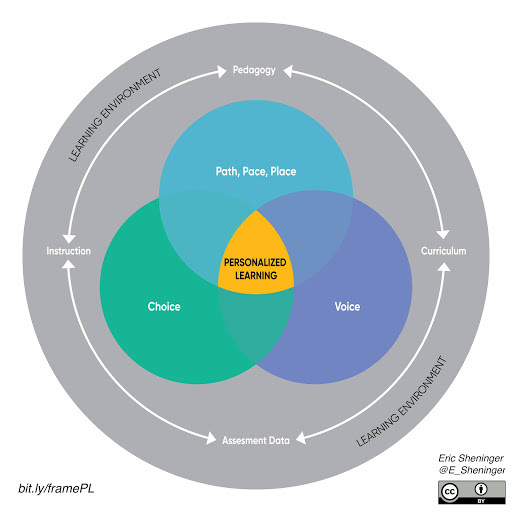
High agency strategies such as voice, choice, path, pace, and place typically in the form of pedagogically-sound blended learning lead to high engagement levels. I encourage you to check out this post that provides a deep dive into effective personalized learning.
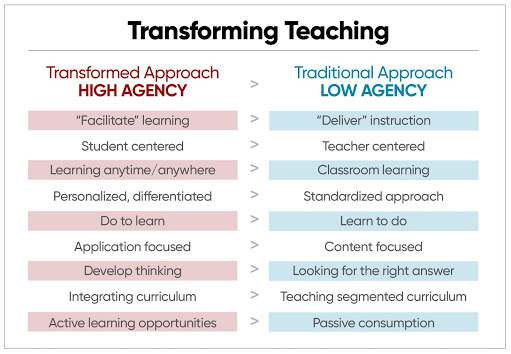
Feedback
Most kids want to know how they are doing and what can be done to improve. If there are no mechanisms for timely, meaningful, and specific feedback, then the motivation to complete any type of remote learning activity wanes. Feedback justifies a grade, establishes criteria for improvement, provides motivation for the next assessment, reinforces good work, and serves as a catalyst for reflection. The assessment determines whether learning occurred, what learning occurred, and if the learning relates to stated targets, standards, and objectives. In reality, formative assessment is an advanced form of feedback. Consider developing digital feedback logs as an engagement strategy.
If students aren't engaged, then the chances are that they won't complete remote activities. The result will be widening learning and achievement gaps that will impact disadvantaged kids the hardest. A compelling reason to learn, coupled with meaningful experiences, is the best recipe for sustained engagement to avoid this potential pitfall while developing the motivation to learn.
Be sure to check out my entire #remotelearning series
August 2, 2020
5 Keys for Successful Remote Learning

Balance
Remote learning does not mean piling on excessive amounts of work on our learners. It also should not require them to be on a device for all of their learning activities. Non-digital assignments have just as much value and can give kids a much-needed break from screens. When technology is used, sound planning ensures there is a balance between synchronous and asynchronous learning while building in breaks for movement, mindfulness, and other essential brain breaks.
Equity
There have always been issues with equity when it comes to education. However, the current pandemic and social justice movements across the globe have brought a more unified focus on the work that needs to be done. In a previous post, I shared these thoughts:
COVID19 has unveiled the harsh reality of the inequities that plague learners in virtually every country. Where you live, in particular, has had a direct correlation to whether or not remote learning has been successful in many schools. The “haves” have tended to prosper while the “have nots” have suffered. We can ill-afford not to address this fact. Additionally, the digital divide is wider than many perceived. Access to devices and reliable WIFI needs to be emphasized.Kids also need access to equitable resources and learning experiences.
Pedagogy
Let’s begin with engagement. If students are not engaged, then they most likely are not learning. Herein lies why it is crucial to make sure that passive consumption of content and low-level activities are followed with more opportunities for active learning. Successful remote learning is dependent on the consistent utilization of effective teaching strategies and pedagogy that empowers all kids to think and apply their thinking in relevant ways. The Rigor Relevance Framework is a fantastic tool for teachers to develop pedagogically sound tasks, both with and without technology. It also provides school leaders with a lens to provide valuable feedback to teachers when it comes to addressing priority standards, implementing scaffolding techniques, creating performance tasks, and developing quality assessments.
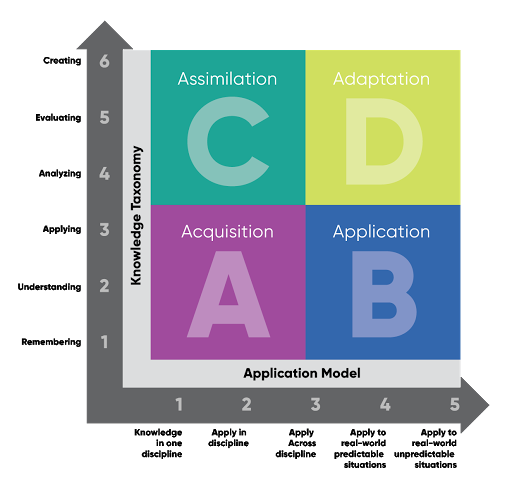 From here, schools can begin to focus on a remote blended learning model that can serve as a foundation for all K-12 classrooms to create a more personalized experience.
From here, schools can begin to focus on a remote blended learning model that can serve as a foundation for all K-12 classrooms to create a more personalized experience. 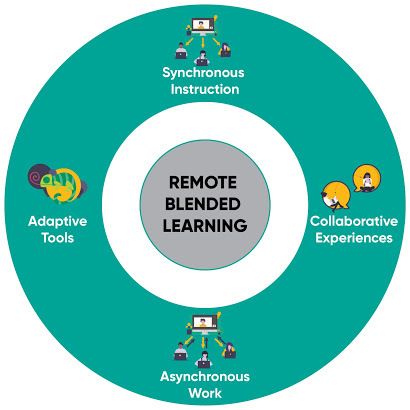
Professional Learning
Many schools were not prepared when the pandemic hit. Going forward, this excuse cannot and should not be used. Over the summer, there has been ample time to support both teachers and administrators to plan and implement remote learning successfully. However, this has also been a time of considerable fluctuation and flip-flopping on opening plans in relation to COVID19 infection rates. If professional learning was not emphasized, it’s definitely not too late. Think about experiences that reflect the conditions where your students will be expected to learn remotely. Foundations workshops and deep dives that address the areas noted in the pedagogy section above represent a solid start. For success, though, a commitment to job-embedded and on-going support in the form of coaching, mentoring, advising, and consistent evaluation of the remote learning plan is needed, with refinement and improvement being the main goals.
Family Engagement
It goes without saying that parents and guardians have many questions and concerns regarding how schools will effectively implement remote learning in the near term. Begin with meticulous planning using the information provided in the key focus areas previously covered above. Then think about strategies to inform and educate families as to what their kids can expect. Digital leadership compels us to meet them where they are and engage in two-way communications using a hybrid approach. Also, consider providing opportunities for them to experience remote learning actively. I have worked with many schools and districts, facilitating webinars for parents on the topic since the pandemic hit to ease concerns and illustrate validity in the approaches being embraced.
To dive deeper into various remote learning elements, please visit this comprehensive Pinterest board that covers teaching, edtech, and SPED strategies as well as abiding by privacy laws. It is essential to understand that there is no one-size-fits-all approach to remote learning. Each district is unique in terms of resources and demographics. Success hinges upon taking and applying the key focus areas listed above and aligning them with your respective classroom, school, or district culture.
Be sure to check out my entire #remotelearning series.
July 26, 2020
Preparation for What Comes Next
Every day it seems a curveball is being thrown at educators. One minute, schools are being given guidance to open up for face-to-face instruction, and the next, they inform the masses that they are starting the school year with remote learning. What comes next remains a mystery for some. Strong leadership in times of uncertainty is critical to not only get by but also set the stage for success. For those who have more clarity, the time is now to ensure needed pedagogical change takes hold. Lessons learned since the start of the pandemic can pave the way to create a new normal.

To adequately prepare, schools should consider focusing their efforts and resources on the following three areas:
Hybrid Learning Models: Hybrid learning combines both traditional and non-traditional learning strategies as well as digital tools to create a cohesive learning experience for kids. Some key aspects to consider are face-to-face instruction, personalization, blended learning, adaptive tools, flex schedules, social distancing, health and safety, and remote learning. For more context, check out this post.Remote Learning: If schools are closed for any amount of time, it is critical to improve remote learning based on some of the challenges that were experienced in the past. It focuses on both digital and non-digital pathways to keep realistic learning going. Now is the time to help educators hone their craft, so students are authentically engaged, empowered to think, provided meaningful feedback, and are able to showcase what they have learned creatively. HERE you can find some specific teaching tips. For a variety of strategies and perspectives, check out this Pinterest Board.Blended Pedagogies – Prior to the pandemic, many schools implemented instructional strategies that incorporated digital but did not fully make the pivot to blended learning. There is a difference. Blended instruction is what the teacher does with technology. Blended learning is where students use technology to have control over path, place, and pace. Other high agency strategies, such as voice and choice, are also prevalent to personalize learning. Data is used to differentiate as well as group and regroup students on an ongoing basis to meet the needs of everyone best. Station rotation, choice boards, playlists, and the flipped classroom are the most practical pathways to implement. The use of digital tools becomes a seamless component. All kids doing the same thing at the same time the same way has to become a thing of the past.In addition to the areas listed above, social and emotional learning (SEL) will need to be emphasized as a key component of what comes next. No one knows for sure what some kids experienced during the extended time schools were closed and the impact that this has had on them. My colleagues Venola Mason and Weston Kieschnick facilitated a webinar with me that dove into all of the focus areas identified in the post. You can view the 30-minute recording below.
Preparing for what comes next will take meticulous planning, flexibility, resolve, and bold leadership. Purchasing devices and mobile hotspots is great, but it doesn’t go far enough. It will also require research-based, evidence-driven professional learning, and provides educators with practical strategies that can be implemented right away. Teachers and administrators deserve needed support to usher in a new normal. Many are crying out for it now. Not the one and done or drive-by variety, but job-embedded, ongoing, and immersive experiences. One of the main lessons learned at the onset of the pandemic was how the majority of schools were ill-prepared for remote learning and the same can be said in terms of what lies ahead. The path ahead might not be crystal clear, but we do have a general sense of the direction schools should take both in the near and long-term. Invest in people now and reap the rewards later.
To learn more about what this could look like in your district or school, shoot me an email (esheninger@leaderd.com).



